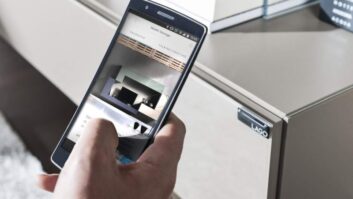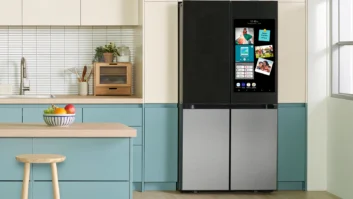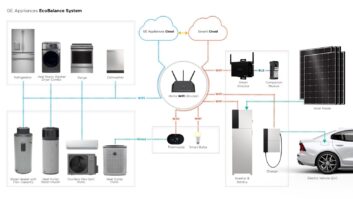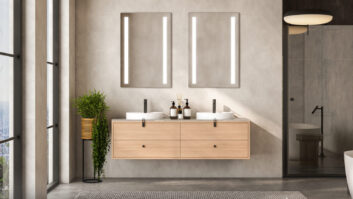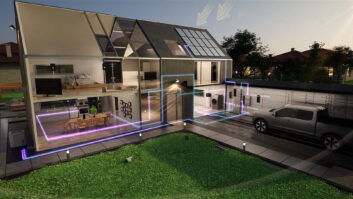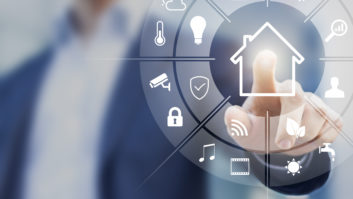NEW YORK – “Smart appliances” became a buzzword in the last decade as manufacturers developed a spate of wirelessly controlled majaps that could turn on, shut down or modify operations in response to signals from utility companies.
These electronic alerts could, in theory, save consumers money and reduce the load on our nation’s power grid by limiting majap usage during peak power demand periods. But the concept faced real-world challenges, including vendors’ incompatible wireless platforms and a nationwide patchwork of utilities that couldn’t be corralled.
Flash-forward to today, where the rapid adoption of mobile technology and user-friendly app interfaces has literally given new meaning to smart appliances.
From just a smattering of smartphone and tablet- controlled majaps last year, the roster of Wi-Fiand cellular-enabled appliances and brands has billowed, giving dealers a high-tech and high-margin feature set to offer shoppers.
While some applications are still outside the mainstream, i.e., refrigerators that read barcodes and alert users when expiration dates expire, most provide more immediate remote services such as temperature and cooking controls, operational alerts, updates of recipes and wash cycles, or even entertainment options.
Representative of that is Dacor, the premium kitchen appliance manufacturer that has given its Discovery iQ 30-inch smart wall oven, introduced last year, increased capabilities in 2014. The improvements, which may have contributed to its Best In Show honors at last month’s Kitchen/Bath Industry Show (KBIS), include greater control and functionality through any Android or iOS device using a proprietary cooking app, which also provides a pre-programmed recipe and cooking guide.
The same smart technology has also been incorporated into the Discovery’s new bigger brother: a 48-inch dual-fuel range. Said Dacor president Steve Joseph: “Our new products are breaking ground in the kitchen appliance industry with smart technology that makes cooking an extension of the connected lifestyle.”
Whirlpool, the world’s largest majap maker and a pioneer in connected white goods, last year launched a line of smart kitchen and laundry products around its 6th Sense Live wireless platform. Introduced first at Abt Electronics, the company’s Connected Suite can be controlled remotely via an iOS app that also provides alerts, updates and energy usage data.
This year Whirlpool has added an entertainment twist with its forthcoming CoolVox Bluetooth-enabled refrigerator. The fridge comes equipped with Harmon/ Kardon speakers and allows users to stream music or instructional podcasts from an iTunes account, a computer playlist or a Pandora or Spotify app via their iPhones, tablets, PCs or MP3 devices, which double as remotes to adjust the volume or change the audio files. The fridge is expected to debut at Lowe’s this summer.
Viking Range has also entered the smart fray, teaming up with Avon, Conn.-based iDevices to help it build wirelessly connected majaps for the manufacturer’s Professional platform. The first fruit of the collaboration is a smart Bluetooth meat thermometer, dubbed iGrill (see p. 33), which can be retrofitted into Viking’s Professional 7-series range. Through a free iOS app, the iDevices-designed thermometer can alert users up to 200 feet away when food has reached optimal temperature. The app can also provide exclusive recipes, temperature graphing, social-network sharing and customizable timers, and will be followed by an Android version later this year.
GE Appliances has similarly provided smart capabilities retroactively to existing products. A recent GE Brillion mobile app update allows current owners of its connected GE Profile wall ovens to preheat, set the timer, check cooking status and receive notifications over their smartphones.
According to GE’s connected home product manager Mike Beyerle, the app upgrade, available for iOS and Android, represents the first time that consumers can add features and capabilities to a remote-enabled GE appliance after it’s already been installed.
The connected wall ovens are available in 27- and 30-inch single- and double-oven configurations with black, white or stainless finishes, and range from $2,300 to $3,800 at retail.
Perhaps the most ambitious smart-appliance platform was introduced this year by LG Appliances. The company has adopted Line, a mobile messenger app available for all smartphone platforms and the Windows and Mac OS X operating systems, and a proprietary natural language service called HomeChat that allows consumers to control, monitor and even communicate with their appliances via text.
Texting “I’m going on vacation” in HomeChat, for example, will trigger the response, “Should I convert to vacation mode?” – which could variously put a refrigerator into power-saving mode, program a robotic vacuum cleaner to sweep the floor at a set time each day, or instruct a washer to start a laundry cycle before a user’s return.
“Always at the forefront of innovation, LG is continually striving to inspire smarter consumer lifestyles in meaningful ways,” noted Seong-jin Jo, president/CEO of LG Electronics Home Appliance Co.
And while Samsung hasn’t made any majap-specific announcements yet this year, the company introduced its portfolio-wide Smart Home Service concept at this year’s International CES. There, it showcased its eco-system of connected products, from TVs to surveillance cameras to appliances, which can all be controlled and managed with a single Smart Home app.
Among other actions, the system allows users to start a wash cycle remotely, shut the air conditioner via voice command, and to receive notifications of expiring consumables or needed service support.
Samsung Electronics America president Tim Baxter said the platform will be rolled out this year, and called it “the first step into the home of the future.”





